Kitten milestones at a glance
|
Birth
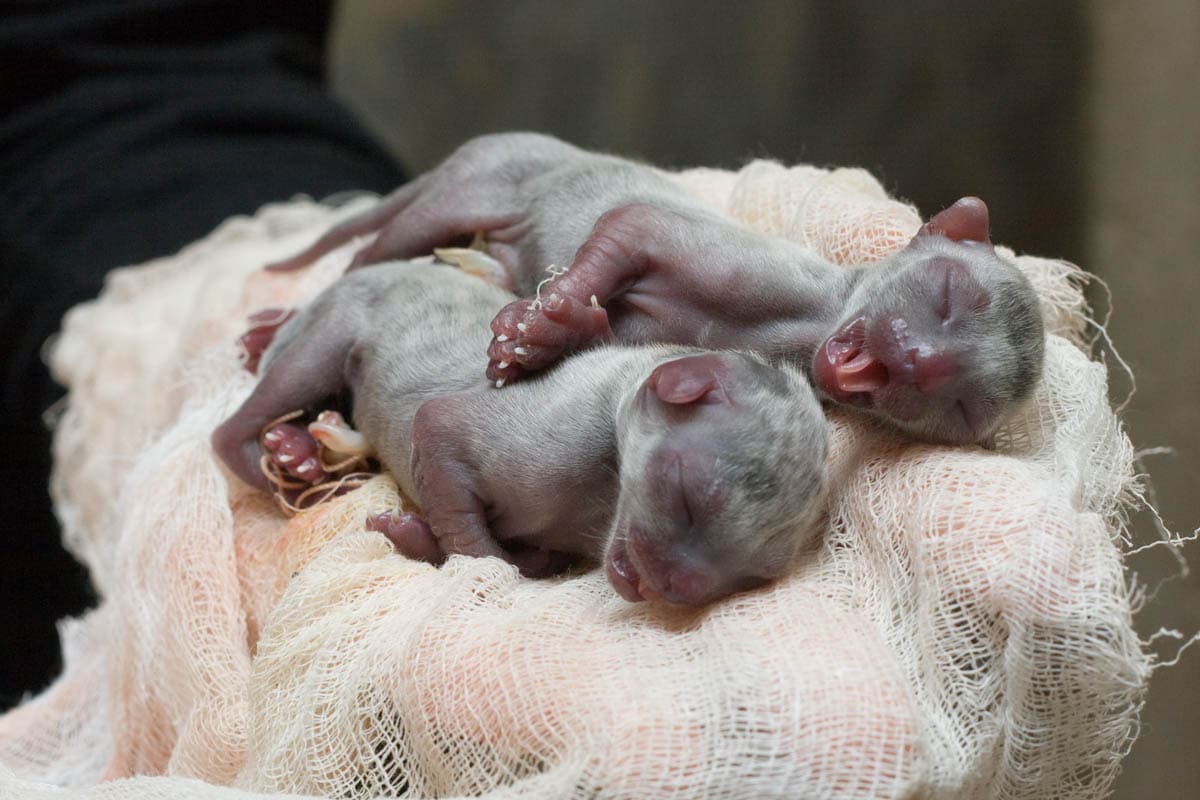
Growth
|
Kitten Development Milestones
The umbilical cord will fall off between 4-5 days.
Care
Kittens will remain with their mother full time, and she will provide all the food, warmth, and care they need. If no mother is available to care for the kittens, they will need to be bottle-fed every two hours with kitten formula and stimulated to go to urinate and defecate.
Caregivers should practice a hands-off approach but remain watchful towards both the mother and her kittens for signs of sickness or failure to thrive. Check the umbilical stump for signs of redness or infection, but keep handling to a minimum.
Newborn kittens are unable to regulate their body temperatures and rely on mum to keep warm. Keep the area warm and at room temperature.
Week 1
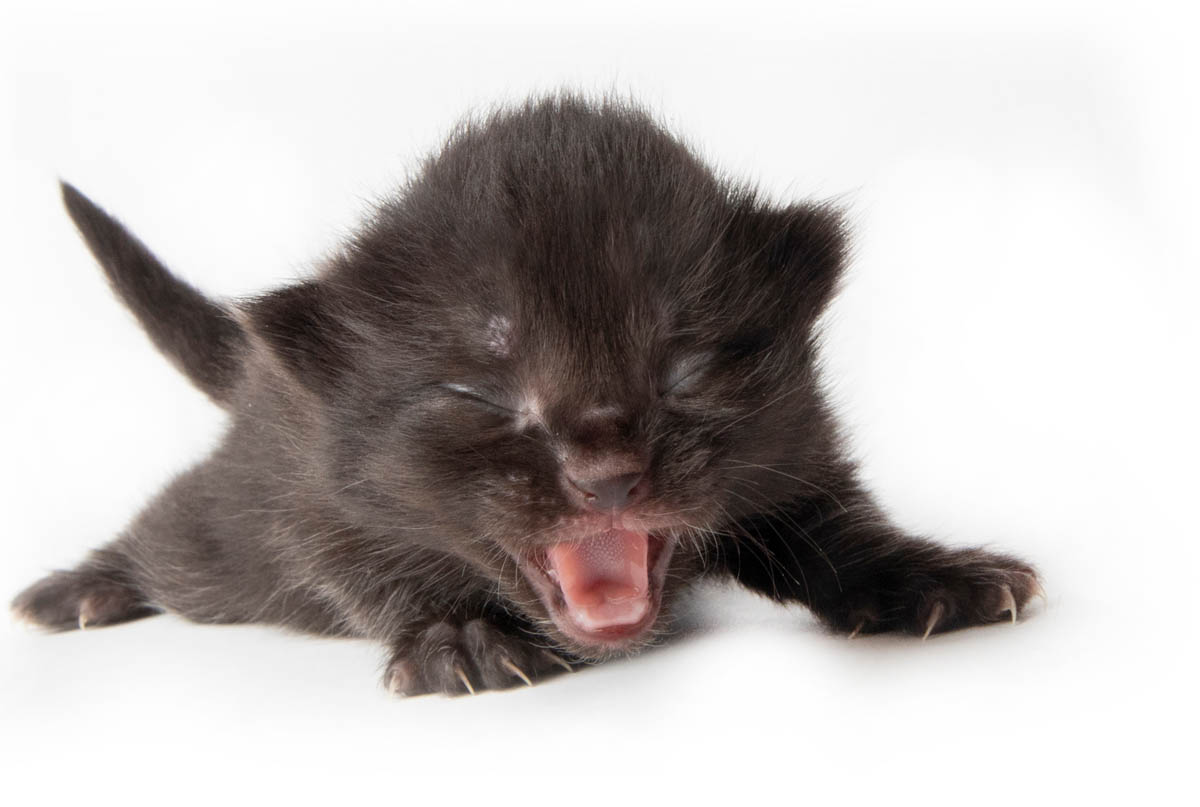
Growth
|
Kitten Development Milestones
Between 1-2 weeks the kittens will be able to hold their head up. Kittens will make a high-pitched meow if picked up.
Care
Kittens remain with their mother 24 hours a day and continue to sleep when they are not nursing. If no mother is available, kittens will need to be bottle-fed every 2-3 hours and stimulated to go to urinate and defecate. Kittens are still unable to regulate their body temperature and must be kept at an appropriate temperature.
Week 2
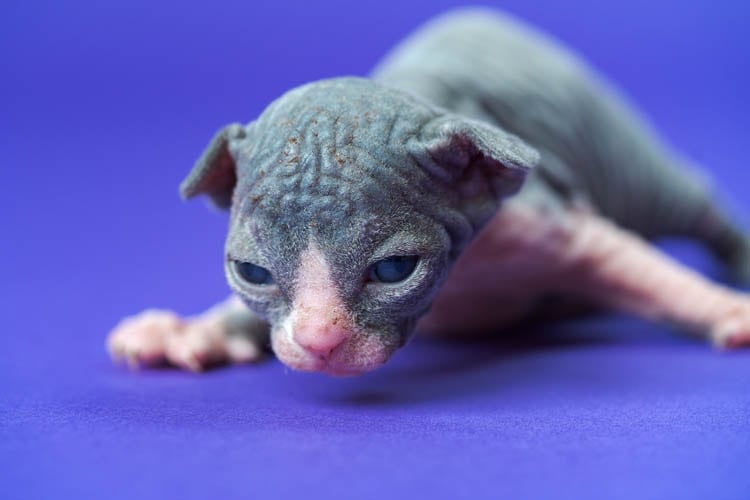
Growth
|
Kitten Development Milestones
Kittens continue to spend the majority of their time sleeping or nursing. Coordination is improving and some kittens may be walking.
Care
Kittens remain with their mother 24 hours a day. If no mother is available, kittens will need to be bottle-fed every 3 – 4 hours and stimulated to go to urinate and defecate. Kittens are still unable to regulate their body temperature and must be kept at an appropriate temperature.
Parasites
- Deworming kittens – First dose.
Week 3

Growth
|
Kitten Development Milestones
Kittens are becoming more active and beginning to explore their environment and interact with littermates. Some kittens begin to purr.
The kittens may defecate on their own, but the mother will still clean up most of their waste.
Care
Kittens remain with their mother 24 hours a day. If no mother is available, kittens will need to be bottle-fed every 4 – 5 hours and stimulated to go to urinate and defecate. Kittens are still unable to regulate their body temperature and must be kept warm.
A low-sided litter tray with non-clumping cat litter can be introduced. Scoop out waste twice a day.
The socialization window begins from 3-4 weeks. During the socialization period, the kitten should be exposed to situations that will be a part of its everyday life. This includes interactions with people, pets, and veterinarians as well as environmental enrichment. Kittens who are socialized during this critical period have a better chance of growing up into well-adjusted adults. Start out slow, and keep kittens within the eyesight of their mother to avoid stressing either the kitten or its mother.
Week 4
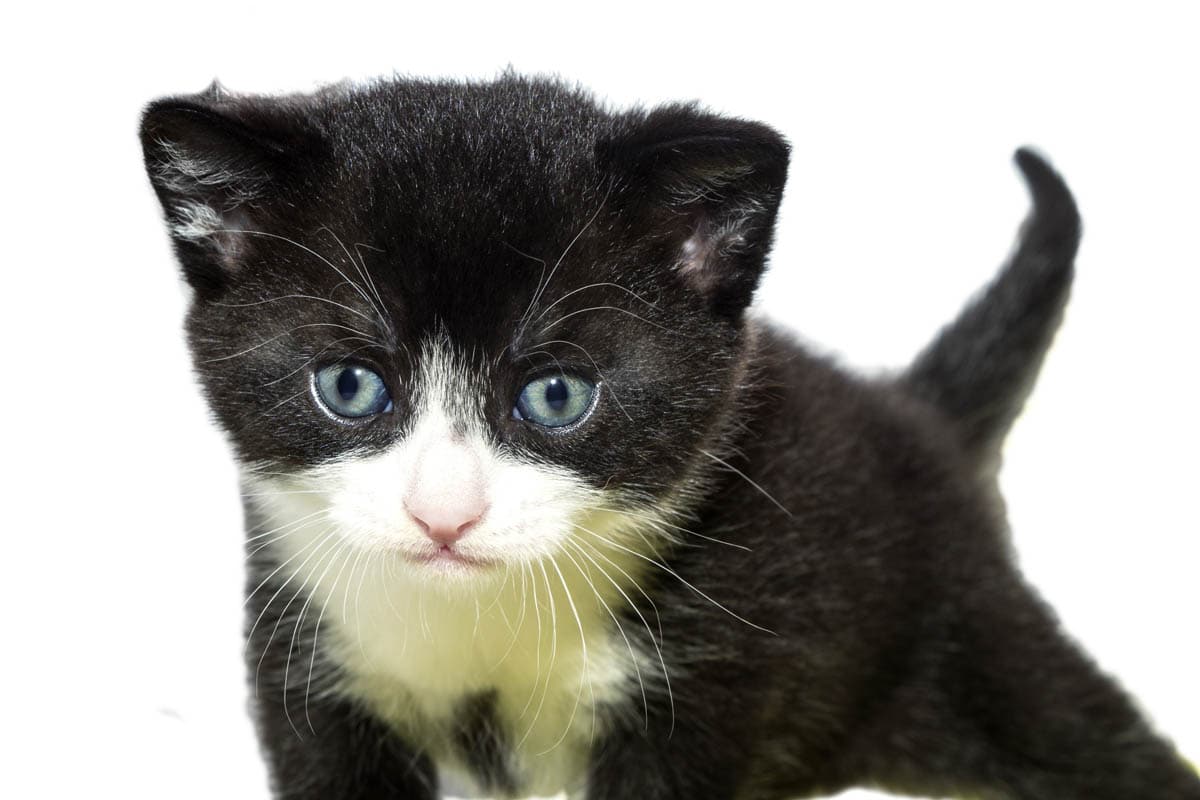
Growth
|
Kitten Development Milestones
Kittens are no longer considered neonatal.
The kittens are becoming more and more active and may attempt to explore outside the confines of their kittening box. It is at this time that the mother will begin to leave her kittens for short periods.
The mother is still grooming her offspring, but they are also able to groom themselves.
Parasites
- Deworm kittens – second dose.
Care
Kittens remain with their mother 24 hours a day. If no mother is available, kittens will need to be bottle-fed every 5 hours. Most 4-week-old kittens are able to use the litter box although accidents are common. Make sure that the bedding is easily washable, so you can ensure the area remains clean.
Provide a shallow container with fresh drinking water for the kittens.
Socialization continues, and toys can be introduced. Ensure there are no loose parts or strings the kitten can chew or swallow.
Week 5
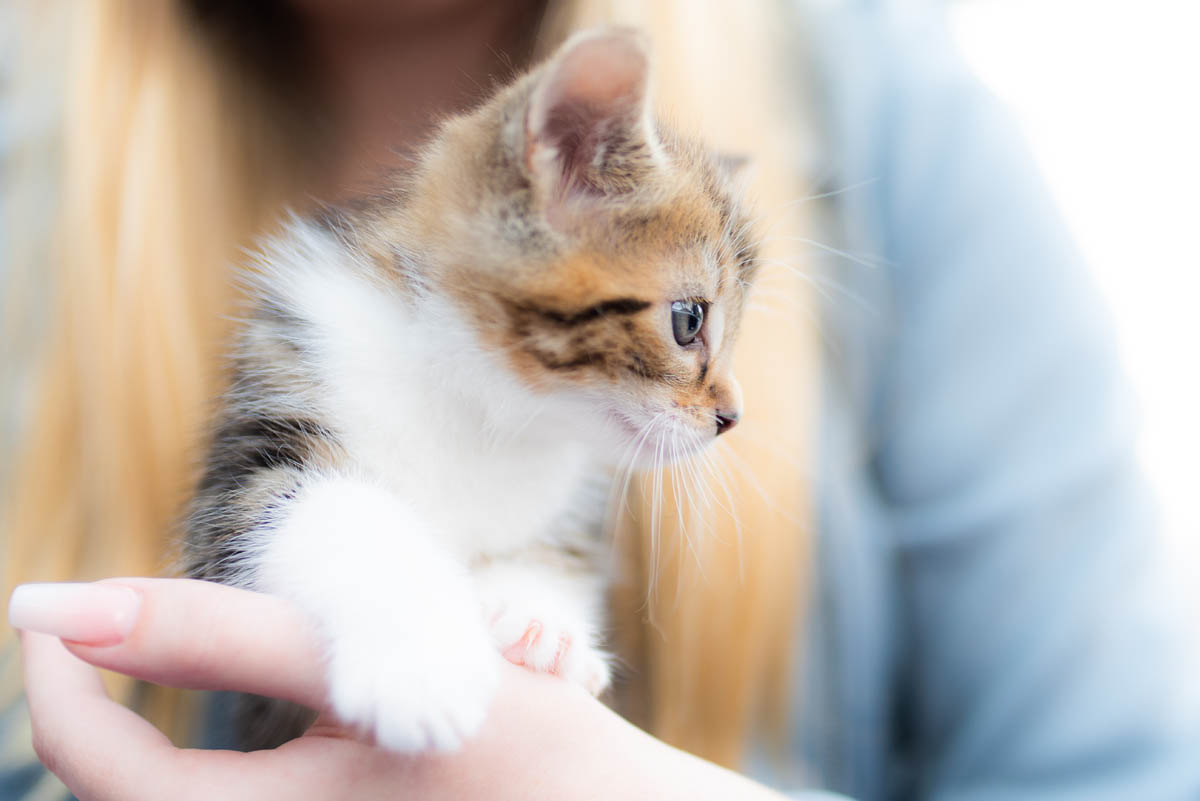
Growth
|
Kitten Development Milestones
Although they may have begun to wean, kittens are still regularly nursing from their mother. Kittens are much more graceful on their feet at this stage and are exploring a lot more, often stalking and pouncing on their littermates.
Care
The weaning process begins between four and five weeks. Start slowly by mixing canned with some water or kitten formula to make a slurry. Not all kittens will take to food immediately, so patience is important. Introduce a small amount, initially. You can introduce solids either by placing a small amount of food on your finger or in a cat bowl.
Week 6
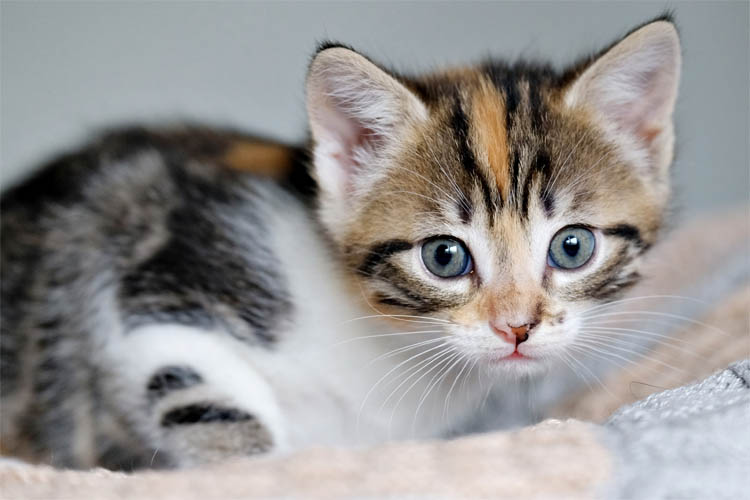
Growth
|
Kitten Development Milestones
Kittens are extremely active, playing-fighting and pouncing, and exploring their environment. At six weeks, kittens are now grooming efficiently.
Care
Most kittens are reliably using the litter tray by six weeks, but there may still be the occasional accident. Kittens should receive their first vaccination and veterinary exam during week six. Feed a small amount of wet food (if weaned) 4-6 times a day, and provide access to clean, fresh water in a shallow bowl.
Kittens are now able to regulate their body temperature but should remain in a suitably warm room around 21.1 – 23.8º C (70 – 75º F).
Week 7

Growth
|
Kitten Development Milestones
Kittens are eating more and more solid food and are almost fully weaned. There is an increase in energy; kittens are now exploring further and climbing.
Care
Feed four small meals a day; dry food may be left out if you are offering kibble. Provide access to clean drinking water at all times.
Week 8
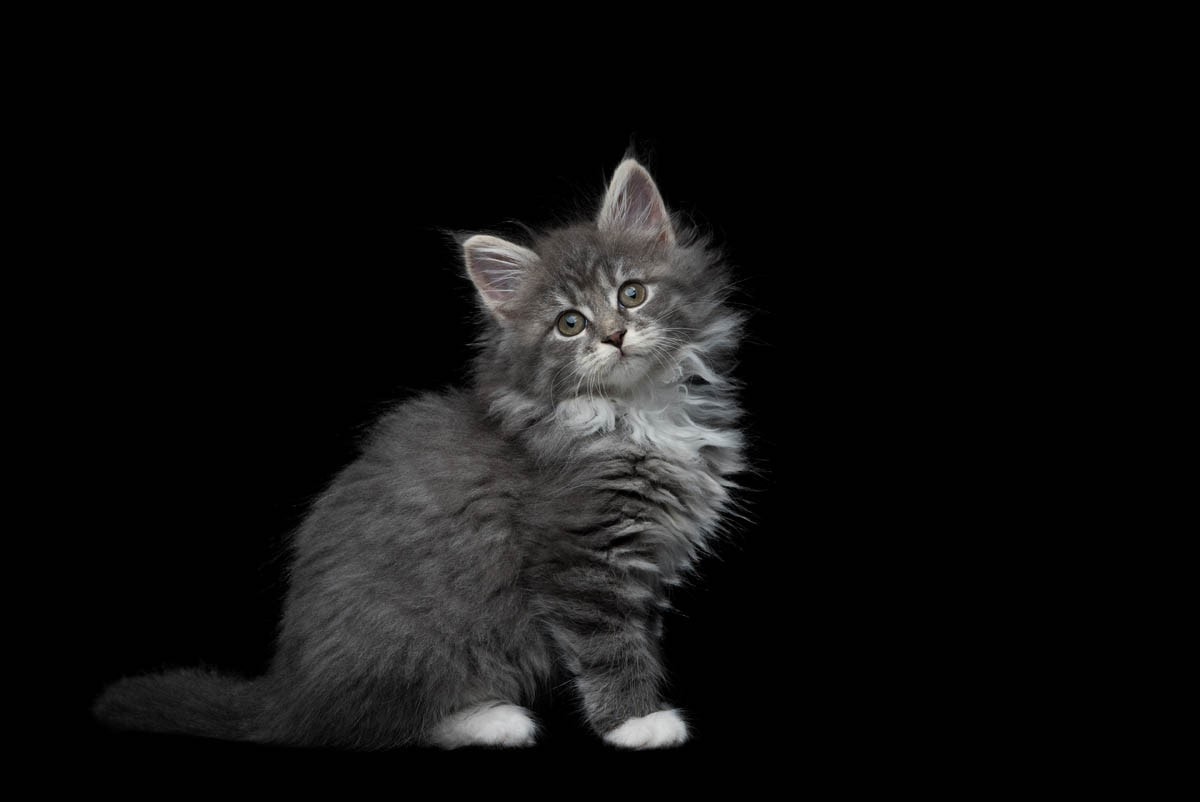
Growth
|
Kitten Development Milestones
The kittens are extremely active, and the mother will have longer periods on her own.
The role of the human is to take an active part in the socialization process without intruding, especially in the very early days. Take the time to not only play with your kitten but also to offer plenty of cuddles and familiarise it with being handled, in general. This includes frequently touching the paws, ears, and mouth, which will make basic health inspections, medicating, and claw trimming easier, as the kitten is brought up to accept this.
Once a kitten is weaned, you should talk to your veterinarian regarding optimal timing for spay/neuter and microchipping.
Vaccinations/parasites
- Kittens receive their first vaccinations between 6-8 weeks of age.
- Deworm kittens – third dose.
Care
Feed three to four times a day (canned), and leave dry food out if desired. Water should be available 24 hours a day.
5 most important guidelines to care for kittens (weeks 1-8)

- Keep kittens warm – kittens cannot regulate their own body temperature until they are 4 weeks old. The kittens will be kept warm by their mother, but the surrounding temperature should be at least 75 degrees Fahrenheit.
- Diet – Both mom and kittens should be fed kitten food during this time period.
- Protect them from disease – Kittens’ immune systems are naïve and they are very susceptible to contagious diseases. Young kittens should be kept isolated from other cats.
- Socialization – After the first few weeks have passed, it is important to get kittens used to humans and to being touched.
- Veterinary care – Kittens should receive their first exam in the first few days after birth. They should go back to the veterinarian at 6 weeks for their first vaccination.
5 important kitten development milestones you should know about
- Umbilical cord falls off – 3 days
- Eyes and ears open – 10 to 14 days
- Start walking and standing – 2-3 weeks
- Able to urinate and defecate on their own – 3-4 weeks
- Begins to eat solid food – 4-5 weeks
Kitten growth chart
Kittens may be affected by what is known as “failure to thrive.” Though the cause is unknown, one of the first signs may be a slowing or absence of weight gain. Weighing kittens weekly can alert the owner to any potential problems.
| Kitten Growth Chart (1-8 weeks) | ||
| Age | Weight (Ounces/Pounds) | Weight (Grams) |
| First few days | 2 to 6 ounces | 50 to 175 |
| 1 week | 5 to 10 ounces | 150 to 275 |
| 2 weeks | 8 to 14 ounces | 250 to 400 |
| 3 weeks | 10 to 16 ounces | 300 to 450 |
| 4 weeks | 12 to 18 ounces | 350 to 500 |
| 5 weeks | 14 to 24 ounces | 400 to 600 |
| 6 weeks | 16 to 28 ounces | 450 to 800 |
| 7 weeks | 1.2 to 2.3 pounds | 550 to 1050 |
| 8 weeks | 1.4 to 2.6 pounds | 650 to 1200 |
Footnote
Cats remain kittens for longer than eight weeks; the aim of this article was to cover the early stages of kitten development.
This is a guide only, as all animals work to their own schedules; however, this does provide you with a guideline as to what should be happening and when.
It is important to keep records of weight; kittens should gain weight steadily and owners should seek veterinary attention if weight gain stops. Also, be on the lookout for signs of sickness in your kitten. These could include loss of appetite, sleeping alone (at a very young age), rejection from the mother, vomiting, diarrhea, weakness, and discharge from the mouth, eyes, and anus.


